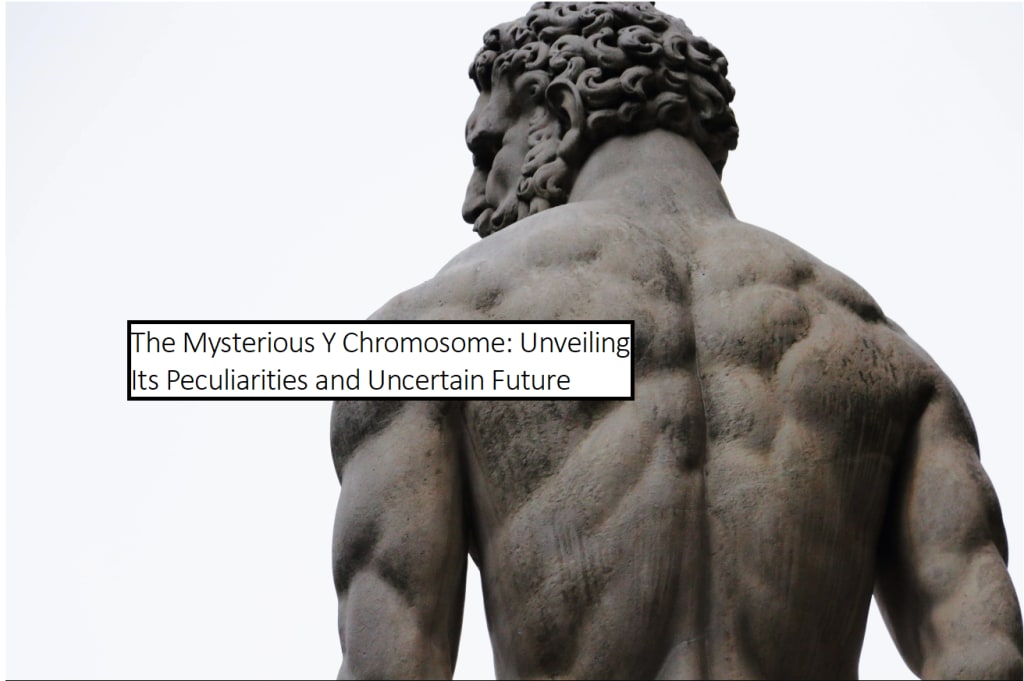
The Mysterious Y Chromosome: Unveiling Its Peculiarities and Uncertain Future
Introduction
In the world of genetics, the Y chromosome has always held a certain mystique. For decades, researchers have been captivated by this enigmatic piece of the human genome, and recent genetic mapping has only added to its intrigue. The Y chromosome, responsible for determining male birth sex in humans and other mammals, has been revealed to be far weirder than anyone could have imagined. In this article, we will explore the fascinating discoveries about the Y chromosome, its evolution, and what the future might hold for this mysterious genetic component.
The Challenge of Mapping the Y Chromosome
Despite significant progress in genetic mapping, there are still numerous secrets and unanswered questions within the human genome. The Y chromosome, the smallest of them all, posed a particularly challenging puzzle. While it contains fewer genes compared to other chromosomes, its structure is riddled with junk DNA, making it difficult to decipher. However, recent advancements in sequencing techniques have allowed researchers to uncover the hidden intricacies of this chromosome.
The Evolution of the Y Chromosome
The story of the Y chromosome's evolution is a tale of transformation and degeneration. Approximately 150 million years ago, the X and Y chromosomes were just ordinary chromosomes, similar to those found in birds. At that time, there were two copies of the Y chromosome, each containing around 1,000 genes. It was during this period that the sex-determining region Y (SRY) gene evolved, giving rise to a protein responsible for activating male genes on other chromosomes, such as the sox-9 gene, which is crucial for testes development.
As evolution unfolded, the Y chromosome underwent significant changes, losing genes at an astonishing rate, approximately 10 percent of all active genes per million years. This dramatic reduction left the Y chromosome with a mere 27 active genes, a fraction of its ancestral genetic content. While the Y chromosome still carries genes essential for sperm production and certain aspects of life, similar genes exist on the X chromosome.
The Intriguing Structure of the Y Chromosome
One of the most puzzling aspects of the Y chromosome is its unusual structure. It contains multiple copies of similar Y-linked genes, including those responsible for sperm generation and testes development. Some of these genes are arranged in strange loops, with sequences appearing inverted or subject to genetic accidents that can duplicate or erase genes. Additionally, the Y chromosome harbors an abundance of seemingly useless structures and junk DNA, including highly repetitive sequences, some of which originate from ancient viruses or genes that have remained dormant for millions of years.
Curiously, the Y chromosome also contains a large section of genes that fluoresce under certain conditions, though the reason for this phenomenon remains a mystery. Moreover, a pseudo-autosomal region, reminiscent of its distant past when it was similar to the X chromosome, can be found on the Y chromosome.
The Uncertain Future of the Y Chromosome
A burning question in genetics is the future of the Y chromosome. Some studies have suggested that Y chromosomes tend to diminish in size and prevalence with age, potentially indicating a gradual decline. Speculation even arises about the possibility of the Y chromosome disappearing entirely within the next 10 million years. However, this hypothesis remains controversial and unproven.
Interestingly, the loss of the Y chromosome has occurred in certain rodent species. One remarkable case is that of the mummy spiny rat, which resides on Japanese islands. These rats have evolved to possess just one X chromosome in both males and females, effectively losing their Y chromosome approximately 2 million years ago. Duplications within the X chromosome took on the role of the Y chromosome in activating the sox9 gene, enabling male development. This adaptation allowed them to thrive, even in the absence of a Y chromosome.
The question of whether a similar fate awaits humans remains uncertain. While the Y chromosome is shrinking over time, it is still doing its job effectively in most mammals. The presence of the SRY gene, which efficiently activates male genes, suggests that the Y chromosome may persist for some time. The possibility of the Y chromosome disappearing entirely is a matter of chance and evolutionary pressures that are not currently present in human populations.
Conclusion
The Y chromosome continues to be a source of fascination and mystery in the field of genetics. Recent advances in genetic mapping have unveiled its peculiarities, from its complex structure to its potential uncertain future. While the Y chromosome may be shrinking, its role in determining male birth sex remains essential. Whether it will eventually disappear or adapt, much like the mummy spiny rat, is a question that remains open. As further studies and discoveries unfold, the enigmatic nature of the Y chromosome will continue to captivate scientists and enthusiasts alike, adding another layer to our understanding of genetics and human evolution.
About the Creator
Kyle Red
I am a passionate explorer of the fascinating interplay between biology, behavior, and well-being. With a keen interest the financial landscape, I delves deep into the science behind motivation, health, and success!





Comments (1)
interestinggg